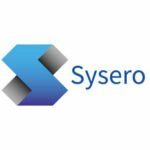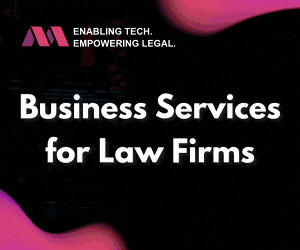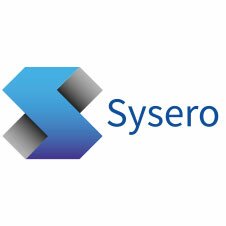Sysero: Three steps to simplifying your business processes with legal workflows
Thriving in today’s legal landscape requires legal providers to think strategically and digitally. The pandemic has unsurfaced many of the shortcomings of more traditional ways of doing business and has pushed legal professionals to embrace new and evolving technologies.
More importantly, it’s also forced legal providers to rethink their business processes. As firms embrace new digital solutions, they’re quickly realising that without the right processes in place, technology can only accomplish so much. This sentiment is reflected in the responses to the 2021 EY Law Survey, which suggest gaps in process management and underuse of technology are limiting organisation’s visibility into risk and creating a ripple effect across the firm. Nearly 70% of legal professionals report their contract creation process isn’t standardised, with 50% saying inefficiencies in the contracting process have resulted in lost business.
To excel in the modern legal environment, firms and legal departments need to not only embrace digital transformation, but also define the correct business processes for their organisations. So, how exactly can you organise and streamline your business processes to realise greater efficiencies?
Step 1: Map Out Internal Processes
The first step in simplifying your firm’s business processes is to look inward. By mapping out the processes associated with your internal operations, you’ll gain a better understanding of how you can improve your current processes, as well as where new ones may be required. Start by considering your most business-critical processes, such as internal knowledge, contracting, and document generation and ask yourself the following:
- What has to happen at every stage of the process?
- Who needs to be involved in the process and at what stage?
- Where will this work take place?
- How will I keep client information secure?
Once you’ve determined the answers to these questions, you’ll be able to map out your workflows. Legal workflow solutions like Sysero allow you to visualise business process flows with a simple, easy-to-use workflow designer, and include built-in data security features such as pseudonymisation and encryption. In the wake of the pandemic, many firms and their clients are working away from the office, so you may also want to consider cloud-based solutions to enable improved business agility
Step 2: Create Effective Client Processes
Once you’ve built your internal workflows, it’s time to consider the client experience. Streamlining workflows for client-facing processes, such as client intake, contract negotiation, and transactional work are crucial for delivering a good client experience.
Today’s clients expect greater transparency, efficiency and cost-effectiveness from their legal providers. By tapping into workflow automation, you can digitise once-manual processes and improve visibility, speed up intake, and ensure compliance.
Take for example, Wikborg Rein’s innovative digital onboarding solution for clients. Launched in collaboration with PSA Consulting, Wikborg Rein’s digital onboarding solution leverages Sysero’s cloud-based workflow automation to easily capture client information online, automatically check it against various public registers and information databases, and authenticate clients through their Bank Identifier Code.
By streamlining the client intake and acceptance process and bringing it online, Wikborg Rein has been able to improve quality, ensure compliance, and get to work faster for their clients.
Step 3: Choose the Right Technology
Once you understand the needs of your firm and the processes that you need to streamline, it’s time to find the right technology. A great place to start is with your internal IT team. Oftentimes, firms have an arsenal of technology that’s underutilised, so it’s worth understanding what technology currently exists within the firm and is at your disposal.
The next step is to evaluate potential technology partners. Fortunately, selecting the right legal tech supplier isn’t so different from choosing any other business partner with which to work. The ideal legal tech partner should have the technology, knowledge and flexibility to create a solution that aligns with your firm’s business objectives and processes.
Be sure to consider the following:
- Is it cloud-based or on-premise? Is there a hybrid option?
- Can it be customised to your requirements?
- How committed is the vendor to data security?
- How can you ensure you follow compliance best practises?
At Sysero, we can help you build a custom workflow solution either on-premise, in the cloud, or as a hybrid solution. As an ISO 27001 certified company, we take data security very seriously and have built-in common data protection best practises into our technology, making it easier for your firm to comply with compliance requirements.
In the light of the recent Schrems II decision, Sysero also makes it easier to comply with UK and EU GDPR by providing the option of hosting your data in a firm’s UK data centre, rather than relying on US-based servers such as AWS, Google and Microsoft. The recent judgement ruled that provisions of US laws do not satisfy data privacy requirements that are essentially equivalent to those required under EU law. That means hosting your firm’s data on popular US-based services may be putting your firm at risk.



